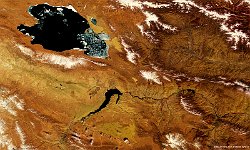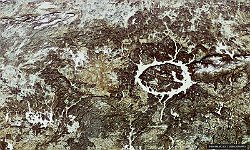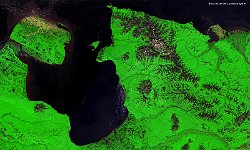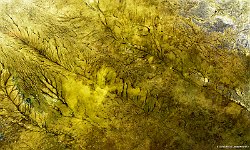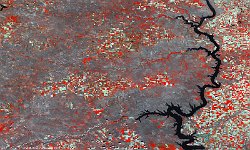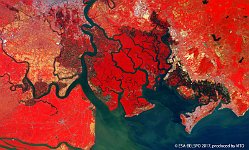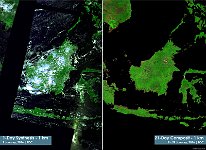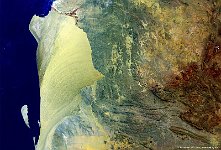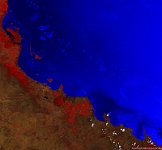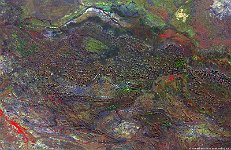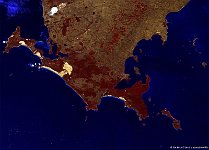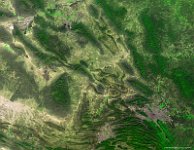36 / 84
Standing Rock Indian Reservation, USA
At 9 August, the UN “International Day of the World’s Indigenous Peoples” is celebrated to pay attention to the survival, dignity, and well-being of indigenous peoples. This year’s theme is dedicated to the 10th anniversary of this day.
The American Indians are probably the most well-known Indigenous Peoples. Dispossessed from their land and relocated to dedicated areas remote from European-populated areas during the 19th century, the United States Government created dedicated reservations for the American Indians from the 1880s onwards.
The Standing Rock Indian Reservation is one of seven reservations (established in 1889) created for Sioux Indians, covering an area of nearly 9,300 km2 in North and South Dakota. Last year, large protests against the construction of the Dakota Access Pipeline through the Reservation area drew international attention.
The false-colour 100 m image of 3 June 2017 shows the Standing Rock Indian Reservation area, with a remarkable alternation of red and grey appearing patches, which indicate cultivated and bare soils, respectively. At the right part of the image, the Missouri River is visible, flowing southward towards Saint Louis to merge with the Mississippi River.
Date: 03/06/2017
Resolution: 100m
